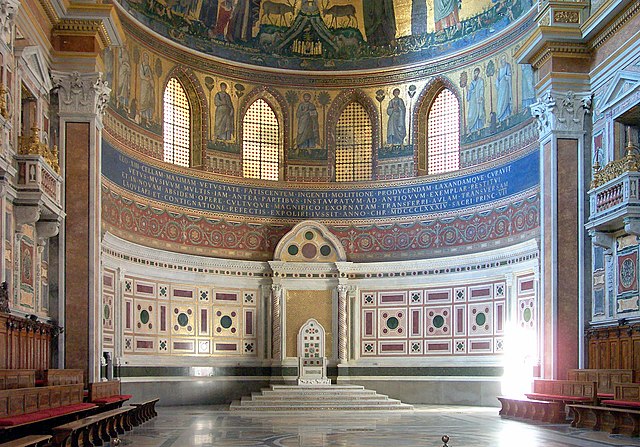The Roman Curia comprises the administrative institutions of the Holy See and the central body through which the affairs of the Roman Catholic Church are conducted. The Roman Curia is the institution which the Roman Pontiff ordinarily makes use of in the exercise of his supreme pastoral office and universal mission in the world. It is at the service of the Pope, successor of Peter, and of the Bishops, successors of the Apostles, according to the modalities that are proper to the nature of each one, fulfilling their function with an evangelical spirit, working for the good and at the service of communion, unity and edification of the Universal Church and attending to the demands of the world in which the Church is called to fulfill its mission.
The headquarters of the Propaganda fide in Rome with north facade on Piazza di Spagna by architect Bernini; seen here is the southwest facade by Borromini: etching by Giuseppe Vasi, 1761
The Basilica of the Annunciation is the largest Christian church building in the Middle East under the supervision of the Congregation for the Oriental Churches.
Laocoön and his Sons in the Vatican Museum, which was under the care of the Dicastery for Culture and Education.
A depiction of Pope Gregory IX excommunicating Holy Roman Emperor Frederick II.
The Holy See, also called the See of Rome, Petrine See or Apostolic See, is the jurisdiction of the pope in his role as the Bishop of Rome. It includes the apostolic episcopal see of the Diocese of Rome, which has ecclesiastical jurisdiction over the worldwide Catholic Church and sovereignty over the city-state known as the Vatican City. As the supreme body of government of the Catholic Church, the Holy See enjoys the status of a sovereign juridical entity under international law.
The papal throne (cathedra), in the apse of Archbasilica of Saint John Lateran, symbolises the Holy See.
The Roman States
Roman States army
The Swiss Guard on patrol








